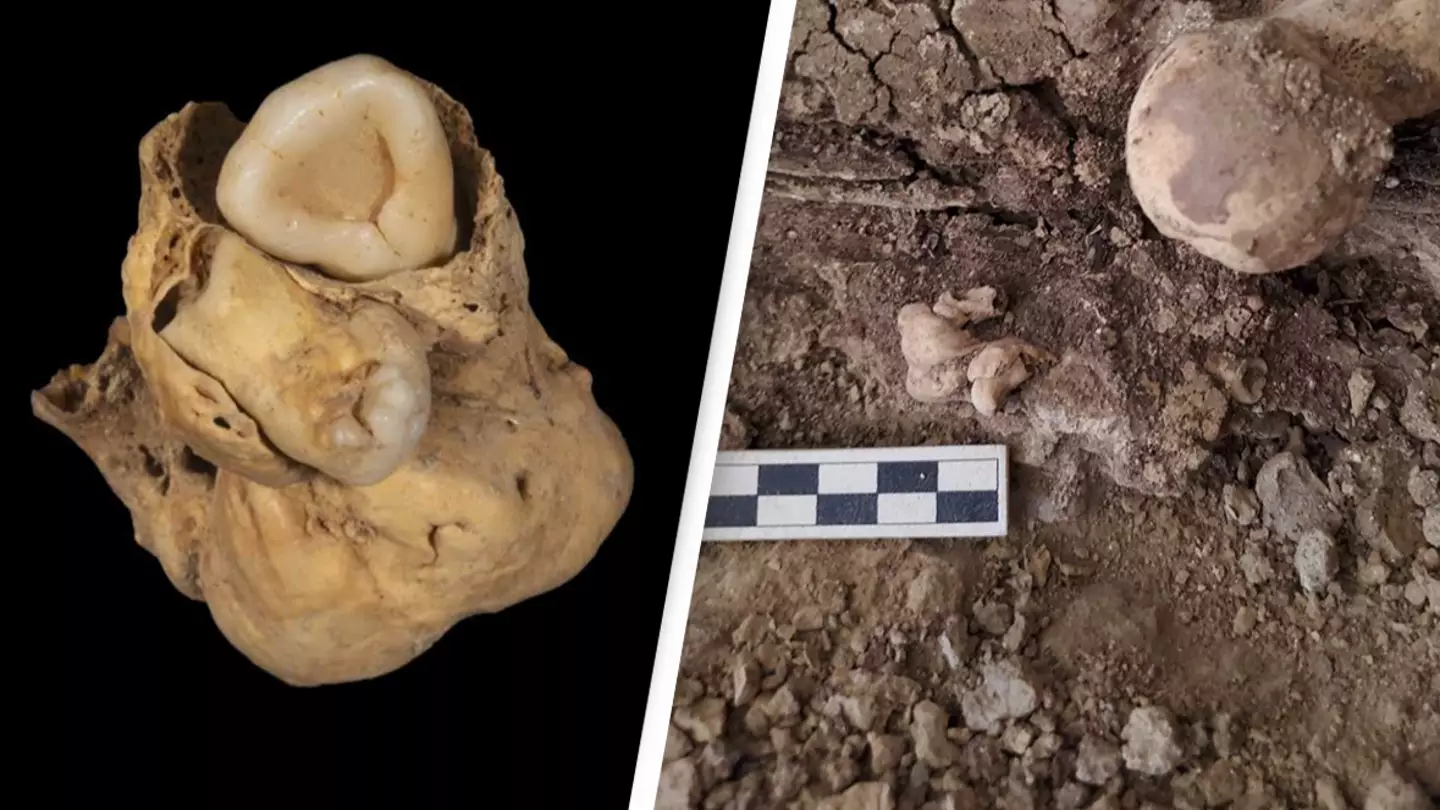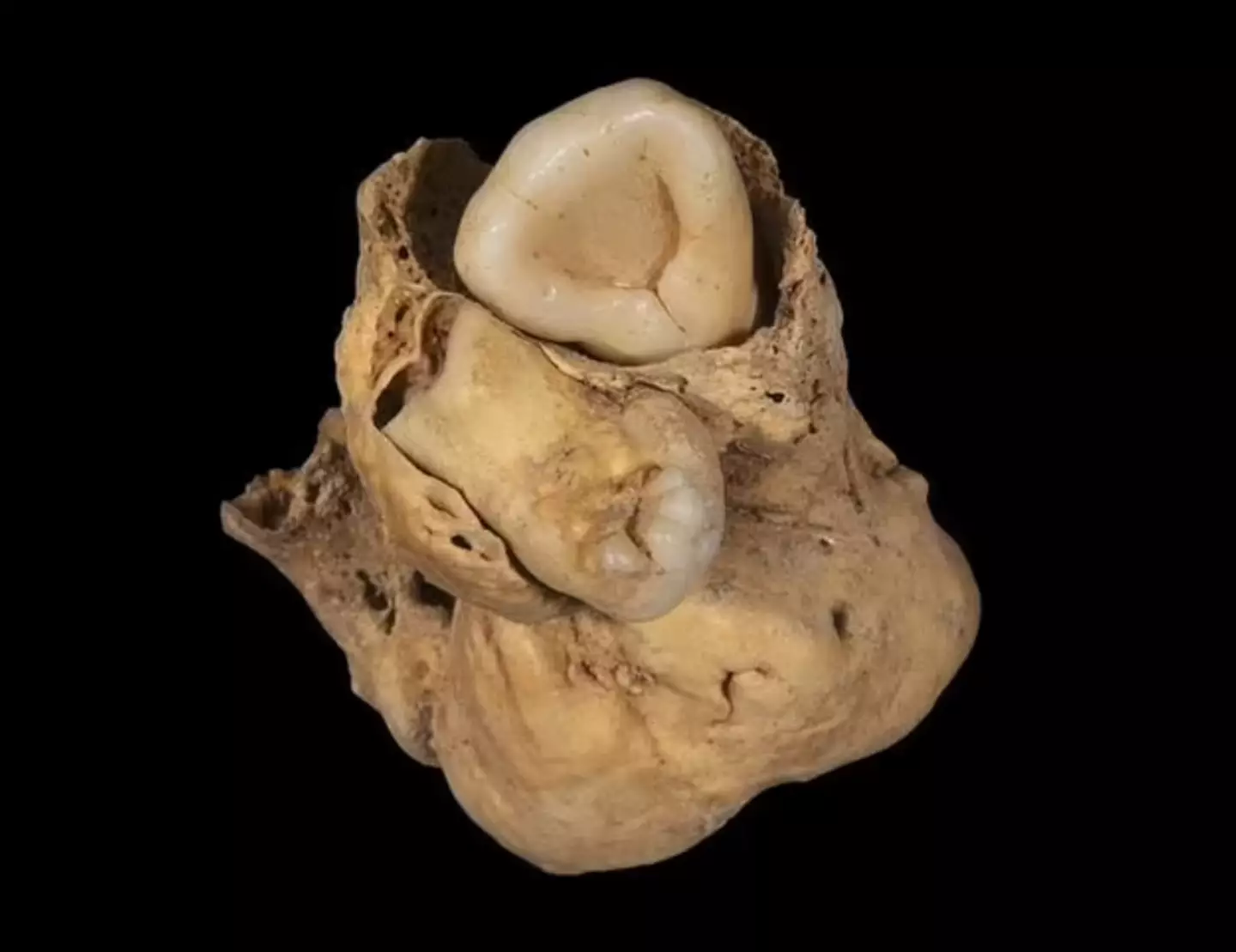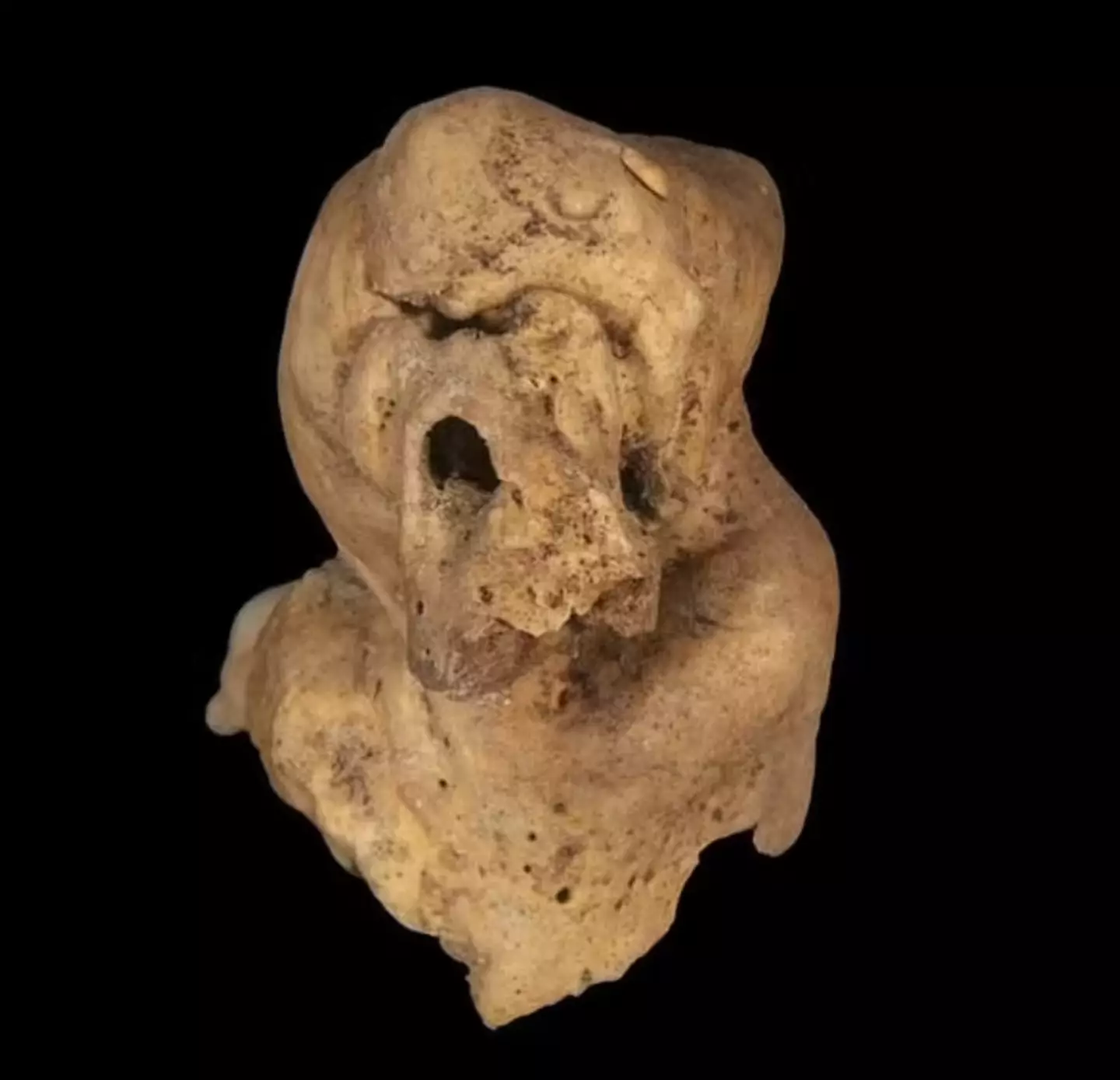
Scientists have made an extremely rare discovery in ancient underground tomb.
Archaeologists in Egypt discovered the body of a woman buried in the tomb and noticed something near her pelvis - teeth.
Obviously that's not where you would usually find a tooth in the body and it was first believed that they'd discovered a fetus.
But, upon further inspection, scientists who are part of the Amarna Project realised that they had found the oldest evidence of a mature ovarian teratoma.
Advert
Teratomas are 'germ cell neoplasms that consist of tissues from at least two germ layers'. Crystal clear, right?
It's extremely rare and may contain fully formed tissue, such as teeth.
The woman was thought to have been between the ages of 18 to 21 at the time of her death over 3,000 years ago and was found in a multi-chambered subterranean tomb in the North Desert Cemetery at Amarna.
The tumor was found to be in her pelvic cavity, as per the study, and was described as 'a multi-lobed roughly ovoid calcified mass and two associated teeth'.

It's reported that this is 'the only reported example of a mature ovarian teratoma from Pharaonic Egypt, and Africa more broadly, predating other reported cases by several centuries' - making the find extremely significant.
Advert
Worldwide, this is the only fifth reported case of a teratoma to be uncovered by archaeologists.
"Subject to taphonomic processes, soft tissue tumors are generally lost to decay and are infrequently identified among human skeletal remains," part of the study reads.
While there's a strong chance of tumors decaying, apparently teratomas 'have a greater likelihood of preservation due to their hard tissue nature, and the unique combination of tissue types associated with teratomas make their identification relatively straight forward'.

It's suspected that the tumor may have affected the young woman's fertility as archaeologists also found a gold ring around the woman's finger featuring an image of Bes - the god of fertility.
Advert
"The presence of a gold ring decorated with the god Bes on Individual 3051′s [the label given to the woman] left hand, and perhaps the positioning of the hand and ring close to the mass, may suggest the teratoma was not asymptomatic and Individual 3051 was attempting to invoke Bes to protect her from pain or other symptoms, or aid in her attempts to conceive and birth a child," the team speculated.
The study was published in the International Journal of Paleopathology.
Topics: News, World News, Science